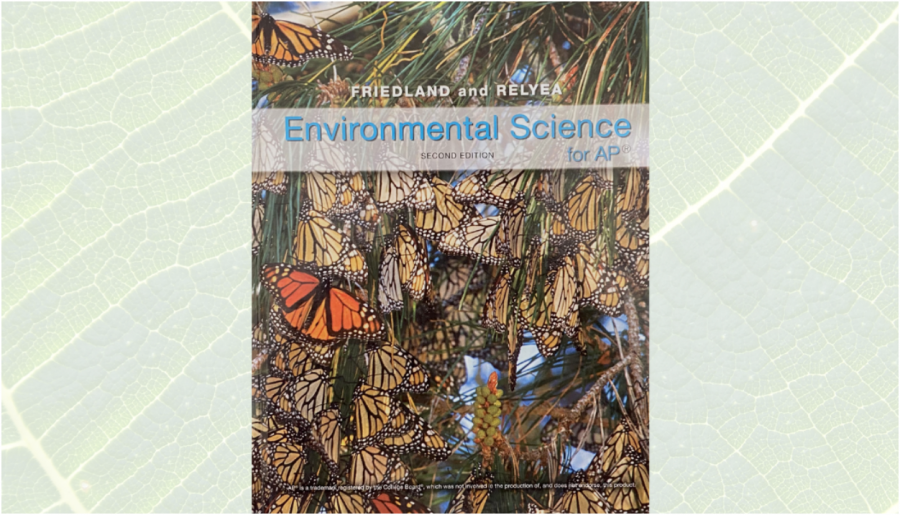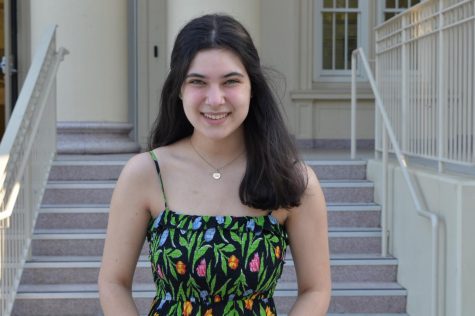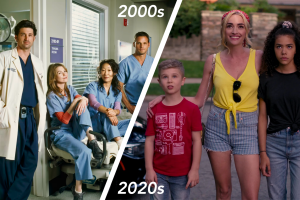Burlingame needs to implement an environmental science course requirement
Photo courtesy of W. H. Freeman and Company
The Advanced Placement (AP) Environmental Science textbook students use to guide their studies.
February 4, 2021
Curriculum requirements are put in place to ensure students receive a well-rounded education suitable for the demands of future careers and schooling, but sometimes those requirements overlook important courses. With a climate rapidly worsening, students need to receive a more holistic, realistic scientific education beyond the two required years. Environmental science courses successfully build off the foundation of biology and chemistry courses to link topical environmental situations in an easily digestible curriculum that creates awareness of our deteriorating climate. A disturbingly large factor of climate change denial stems from a lack of education about our environment. Without a proper understanding of the how and why of climate change, and its consequences, people will continue to live unsustainable lifestyles that further damage our climate.
Currently, the San Mateo Unified High School District (SMUHSD), along with all other California public high schools, requires two years of science classes, more specifically, 10 credits of biology and 10 credits of chemistry. Following those two years, most students are encouraged to take at least another 10 credits of a science course, whether it be physics (Advanced Placement (AP)/College Preparatory (CP)), AP Chemistry, AP Biology or environmental science (AP/CP). This “encouragement” does not ensure that all students have access to an education about the most timely topic. Burlingame High School student analytics reveal that only 153 students took an environmental science course in the 2019-2020 school year. Given that the combined student population of students in grades 11 and 12 was 730, that means that roughly 21% of the eligible students took an environmental science course. This is a disappointing figure.
If over two centuries ago Great Britain did not begin an Industrial Revolution, if our capitalistic society did not invade and destroy precious forests — a prized carbon sink — if Colonel Drake had not discovered oil in 1859 in Pennsylvania and Ford had not created a transportation empire, if Americans could simply resist a quarter pounder from McDonalds, we wouldn’t be in this state. These events have transpired into carbon-dioxide-emitting indulgences of energy use worldwide, and a rising population to partake in the countdown until doomsday are to blame for the melting arctic, polluted air, rising ocean levels and shrinking forests. While 30 years ago the band R.E.M might have felt fine about the chaos ensuing worldwide, in present day we are not afforded the luxury of obliviousness in a world crumbling before our eyes; it is up to us to pick up the Hansel-and-Gretel style breadcrumb trail leading back to a sustainable lifestyle. The first crumb resides on the linoleum floor of a high school science classroom. Environmental science classes provide a space to listen and to learn, so as to have the information to talk, to scream at the world and tell them to take action.
Living in the climate-aware state of California, it may seem like climate change denial is dying down or so distant it is of little significance, but every person who is not making a concerted effort to combat climate change is making our situation worse. By simply taking shorter showers, opting to drive electric cars or making conscious decisions when purchasing food and clothing, we will make progress. It is absolutely vital that students are equipped with the knowledge of how to adjust their lives to be more sustainable for the betterment of our planet. Even on a small scale, everything counts.
In order to fulfill the Burlingame High School mission statement, regarding its aid in students’ development of skills “that will prepare them to meet the … responsibilities of citizenship,” the school should consider adding a year or semester requirement of environmental science. I acknowledge that this is a large feat, an extra requirement could put a strain on the schedules of students, such as those with an aptitude for engineering who may opt for courses like physics over environmental science, but I do not feel that Burlingame is doing enough to ensure students leave 1 Mangini Way with proper knowledge of the great modern climate dilemma. There are limited opportunities for students to get involved with the subject — options mainly include joining the Environmental Club or taking the course — but these optional offerings are dependent on student initiative and are simply not enough to ensure students will receive a proper climate education. As the generation responsible for writing legislation, leading corporations and organizing widespread activism, not all students are prepared, and that is not acceptable in these times.











































Ellen Kerr • Feb 2, 2022 at 8:28 pm
I am so excited to see this article. I am a teacher at George Washington High School in San Francisco. I am doing a research project with the American Federation of Teachers about how to bring more environmental education to our schools. Please contact me so I can brainstorm with like-minded people.
Ellen Kerr
Ms. Johnson • Feb 5, 2021 at 11:53 am
Thank you so much for highlighting the importance of engaging in understanding climate change and solutions! I would like to say that Environmental Science doesn’t have to just be taught in Environmental Science courses. Climate Change touches every aspect of life and can be taught through all subject matter. I accept your challenge of encouraging all students to take the course and I extend the challenge to my peers to bring environmental topics into their curriculum as well.
Thank you,
Ms. Johnson
Environmental Science teacher
Alexandra Kirkpatrick • Feb 5, 2021 at 10:48 am
YES! Thanks Lexi, what a great article!